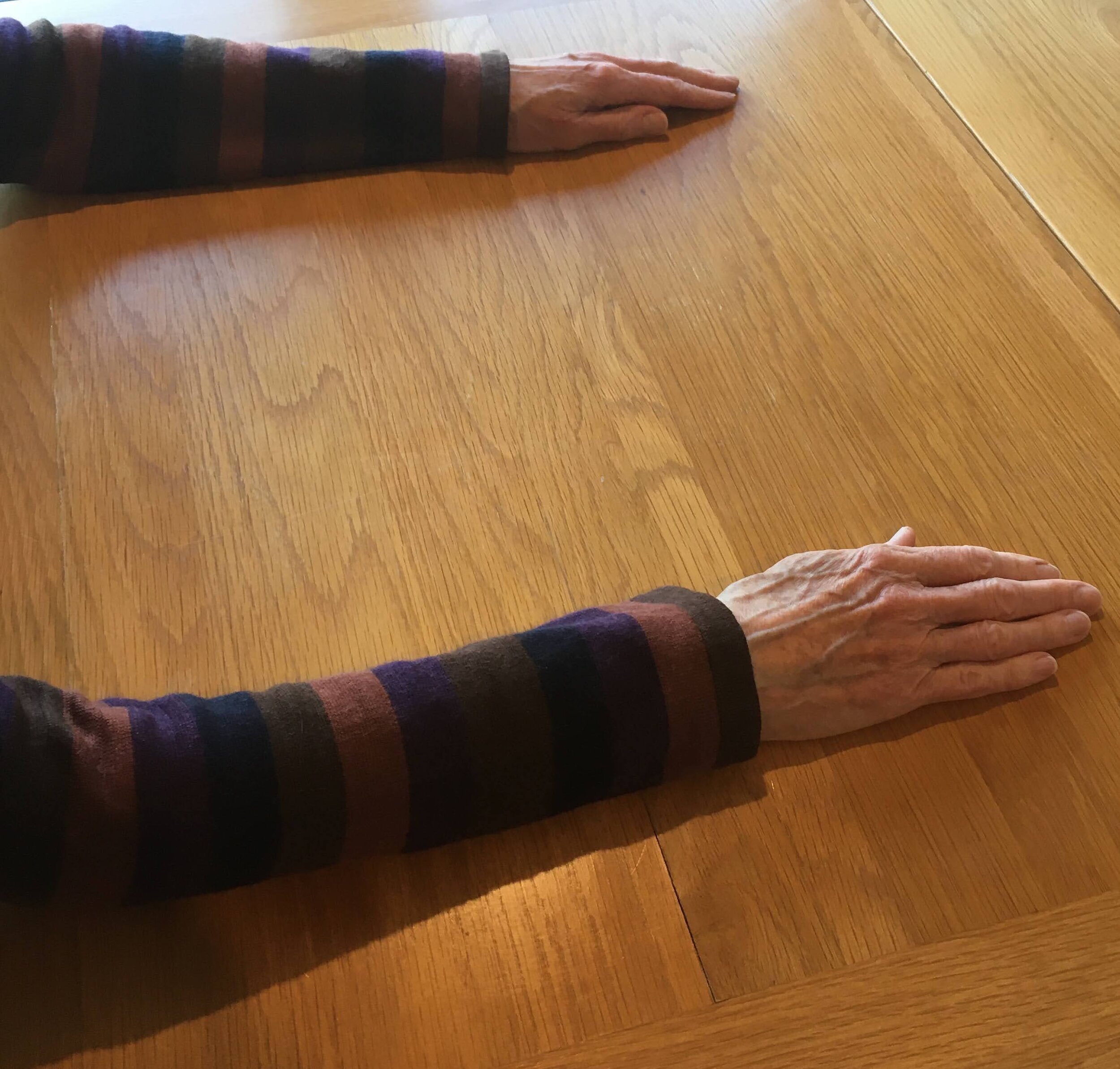Listen and follow to give your hands a break
This ‘non-activity’, as you might call it, is aimed primarily at those who’ve already taken some Alexander Technique lessons. But if AT is new to you, please do give it a try.
Our hands are always busy
At the mere thought of activity the relevant muscles will begin to contract. So, give them a break for a few minutes. You’ll have to ask them to stop doing their thing, or else they’ll continue to be busy.
Sit fairly close to your desk or table and make sure you’re on your sitting bones. Your feet are flat on the floor, hip-width apart. Ensure you’re balanced so that it’s easy to stay sitting there.
Your forearms, including the elbows, are on the table, with the palms down. You can angle them in slightly so the elbows are wider than the fingertips.
Allow your neck to be long, your jaw not tight, and breathe through your nose.
Tracing pathways
In your mind, follow a path along your neck, along the top of the shoulders, down to the elbows, and all the way to the fingertips. In the same way, trace a path along your neck and spine, then down the legs, right to the ends of your toes.
Allow the table to support your forearm and let the fingertips soften, so they notice the table beneath them. They’re almost like chocolate. What texture and temperature do you notice?
The floor is supporting your feet and the chair is supporting your sitting bones.
Don’t tighten any muscles in your hands and wrists because there is nothing they need to do. You’ll need to keep reminding yourself of this.
Think of the wrist unlocking…
…to give more space inside.
Then, rolling over your little finger side, rotate your forearms so the palms are facing the ceiling. Without straightening the fingers, ask them to release into length. Don’t tighten the thumbs. What does the back of your hand notice?
Simply sitting and waiting
Again, check your balance and your breathing. Your legs aren’t tight and neither is any other part of you. You’re simply sitting and waiting, taking advantage of the support offered you by the floor, chair, and table. Your head is balanced on top of your lengthening spine. By asking your muscles not to contract unnecessarily, your whole self will expand slightly. Allow your 3D self to take up all the space it needs.
Keep reminding yourself not to tighten your neck or face, shoulders or arms, tummy or legs. Stay like this for a few more minutes if you want to, maybe rotating the forearms so the palms once again rest on the table. Or, if you’ve had enough, take your hands off the table and continue with your day, aiming to maintain just enough effort - but no more - to carry out your activities.

